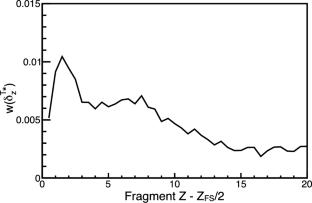Study of the log-third-difference method for the computation of even-odd staggering in fission yields
Abstract
The even-odd staggering in fission fragments yield distributions is an important observable to address the role of intrinsic excitations in the fission process. However, its computation as a function of the fragment split is an ill-posed problem that is usually solved through certain assumptions. Arguably, the most widely used method for its computation is the log-third-difference method, which assumes an underlying local Gaussian distribution. Experimental data of the even-odd effect show sharp features and peaks that are a challenge for the log-third difference method (or any method for that matter). This paper presents a detailed study of the performance of the log-third-difference method and describes three strategies for improving the precision and accuracy around these sharp features. The best results are obtained with an iterative application of the method and with the use of a multi-Gaussian fit. A hybrid process combining both corrections is also described and applied to real data. In regions with a smooth behaviour, the direct application of the log-third-difference method remains the best option.


 求助内容:
求助内容: 应助结果提醒方式:
应助结果提醒方式:


